Pulmonary Nodule in a Patient with Oral and Lung Cancer: Cryptococcus Infection
Abstract
1. Introduction
2. Case Report
3. Discussion
Author Contributions
Funding
Acknowledgments
Conflicts of Interest
Ethics Statement
References
- Aires, F.T.; Lin, C.S.; Matos, L.L.; Kulcsar, M.A.V.; Cernea, C.R. Risk factors for distant metastasis in patients with oral cavity squamous cell carcinoma undergoing surgical treatment. ORL J. Otorhinolaryngol. Relat. Spec. 2017, 79, 347–355. [Google Scholar] [CrossRef]
- Sumioka, S.; Sawai, N.Y.; Kishino, M.; Ishihama, K.; Minami, M.; Okura, M. Risk factors for distant metastasis in squamous cell carcinoma of the oral cavity. J. Oral. Maxillofac. Surg. 2014, 71, 1291–1297. [Google Scholar] [CrossRef]
- Riihimäki, M.; Hemminki, A.; Fallah, M.; Thomsen, H.; Sundquist, K.; Sundquist, J.; Hemminki, K. Metastatic sites and survival in lung cancer. Lung Cancer 2014, 86, 78–84. [Google Scholar] [CrossRef]
- Schmalzle, S.A.; Buchwald, U.K.; Gilliam, B.L.; Riedel, D.J. Cryptococcus neoformans infection in malignancy. Mycoses 2016, 59, 542–552. [Google Scholar] [CrossRef] [PubMed]
- Ou, K.W.; Hsu, K.F.; Cheng, Y.L.; Hsu, G.C.; Hsu, H.M.; Yu, J.C. Asymptomatic pulmonary nodules in a patient with early-stage breast cancer: Cryptococcus infection. Int. J. Infect. Dieases 2010, 14, e77–e80. [Google Scholar] [CrossRef] [PubMed][Green Version]
- Sun, L.M.; Chen, T.Y.; Chen, W.J.; Hsieh, M.J.; Liu, J.W.; Huang, C.C.; Wang, C.J. Cryptococcus infection in a patient with nasopharyngeal carcinoma: Imaging findings mimicking pulmonary metastases. Br. J. Radiol. 2002, 75, 275–278. [Google Scholar] [CrossRef] [PubMed]
- Chayakulkeeree, M.; Perfect, J.R. Cryptococcosis. Infect. Dis. Clin. N. Am. 2006, 20, 507–544. [Google Scholar] [CrossRef] [PubMed]
- Kontoyiannis, D.P.; Peitsch, W.K.; Reddy, B.T.; Whimbey, E.E.; Han, X.Y.; Bodey, G.P.; Rolston, K.V. Cryptococcosis in patients with cancer. Clin. Infect. Dis. 2001, 32, E145–E150. [Google Scholar] [CrossRef] [PubMed]
- Chang, W.C.; Tzao, C.; Hsu, H.H.; Lee, S.C.; Huang, K.L.; Tung, H.J.; Chen, C.Y. Pulmonary Cryptococcosis: comparison of clinical and radiographic characteristics in immunocompetent and immunocompromised patients. Chest 2006, 129, 333–340. [Google Scholar] [CrossRef] [PubMed]
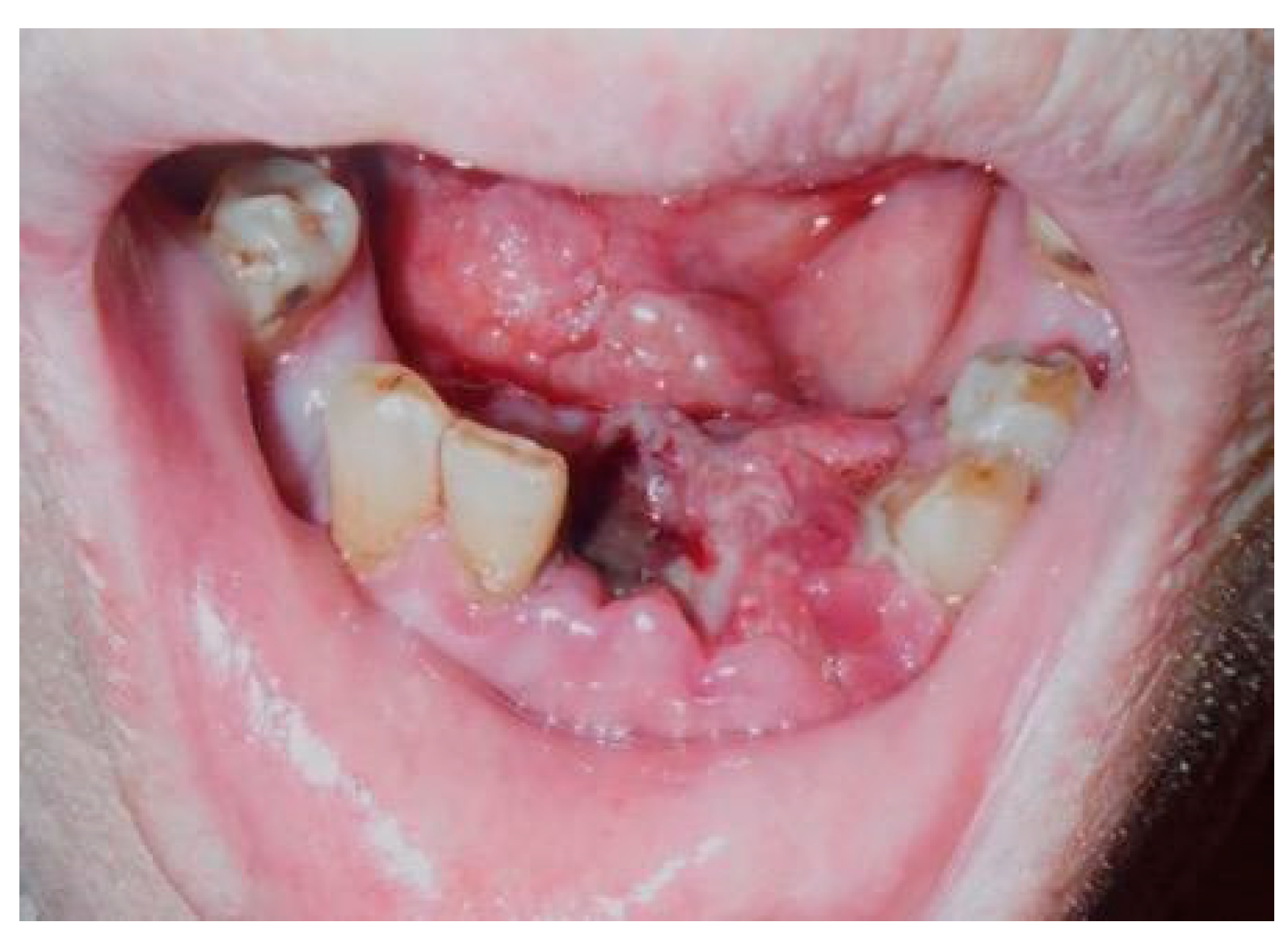
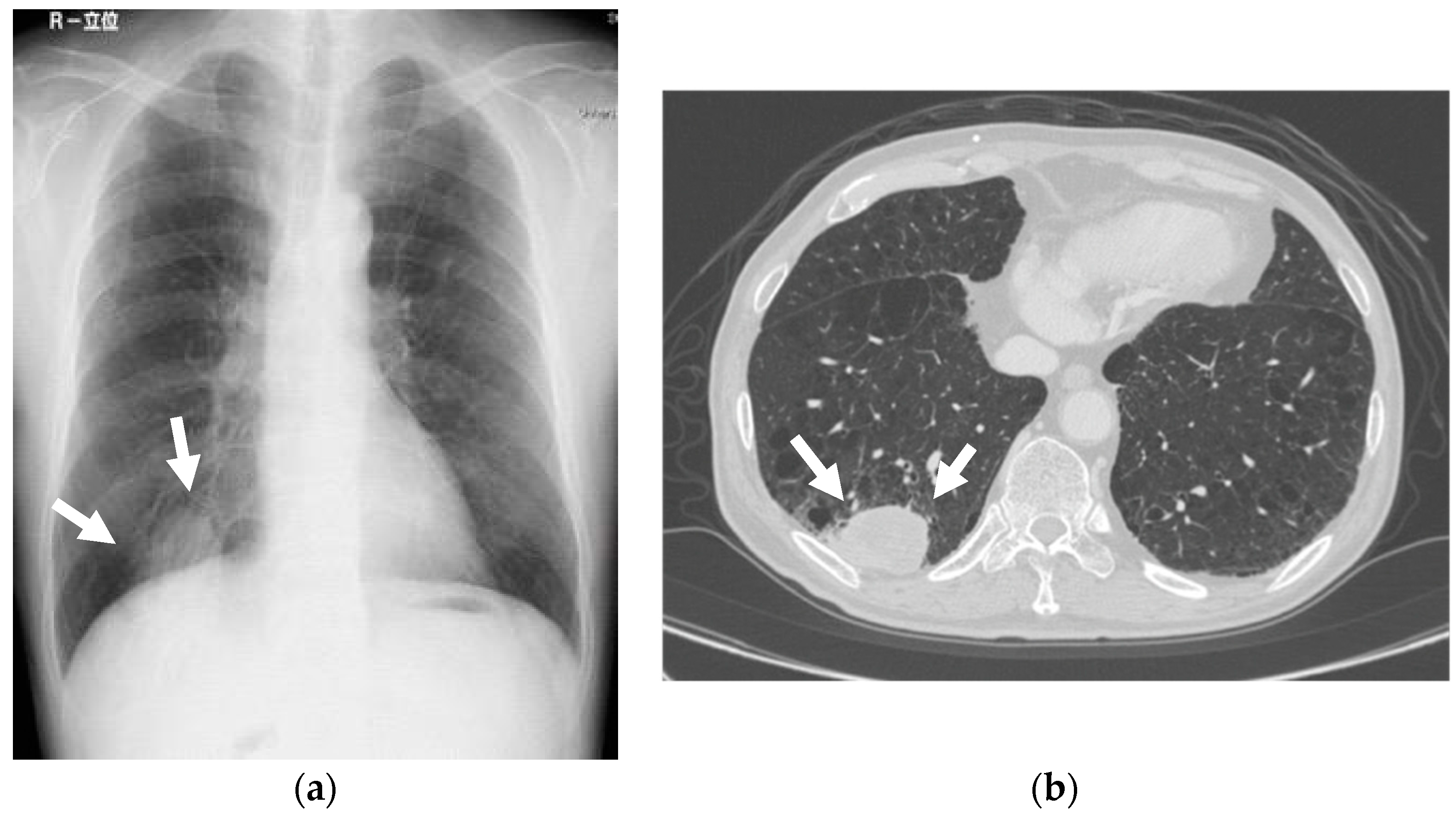
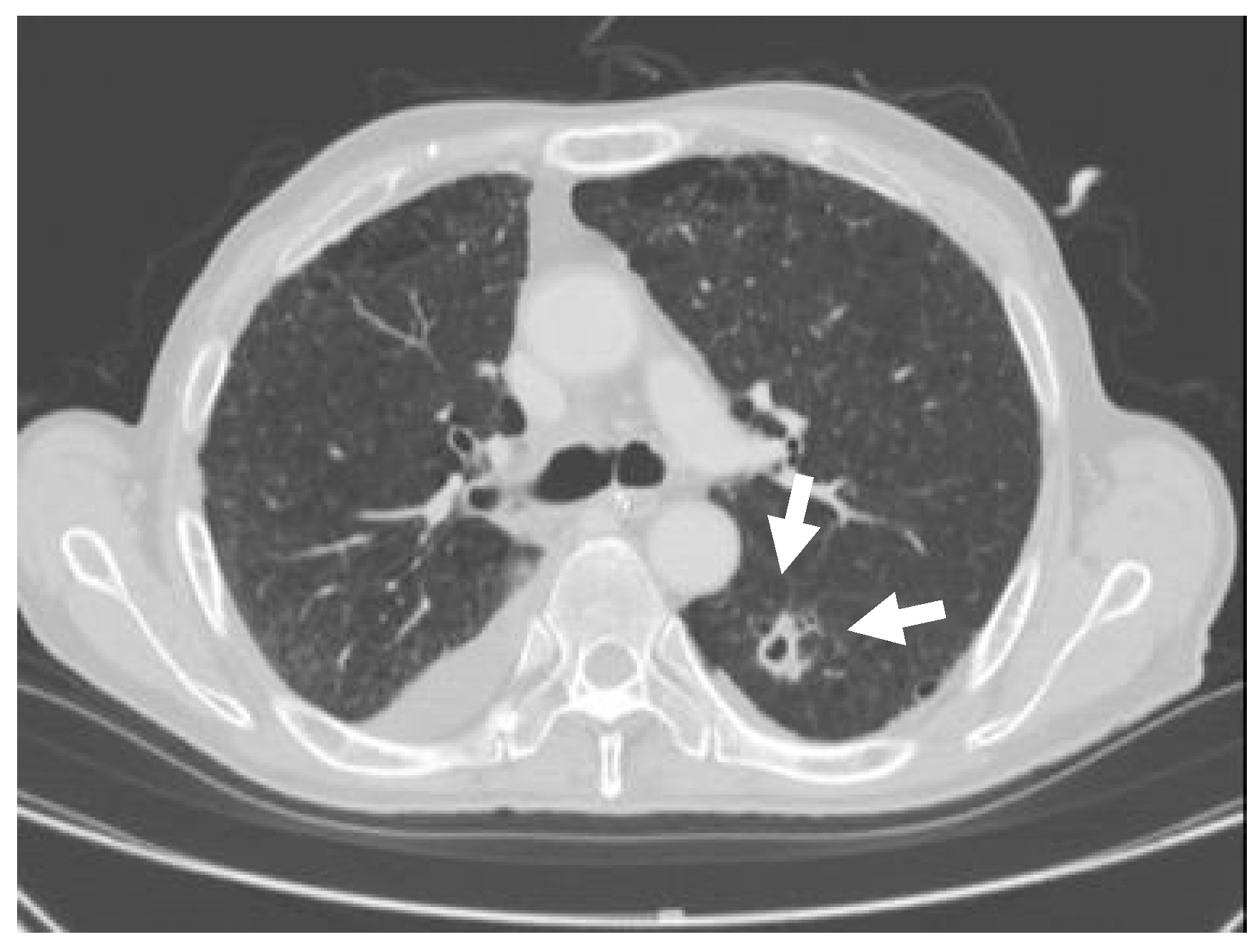
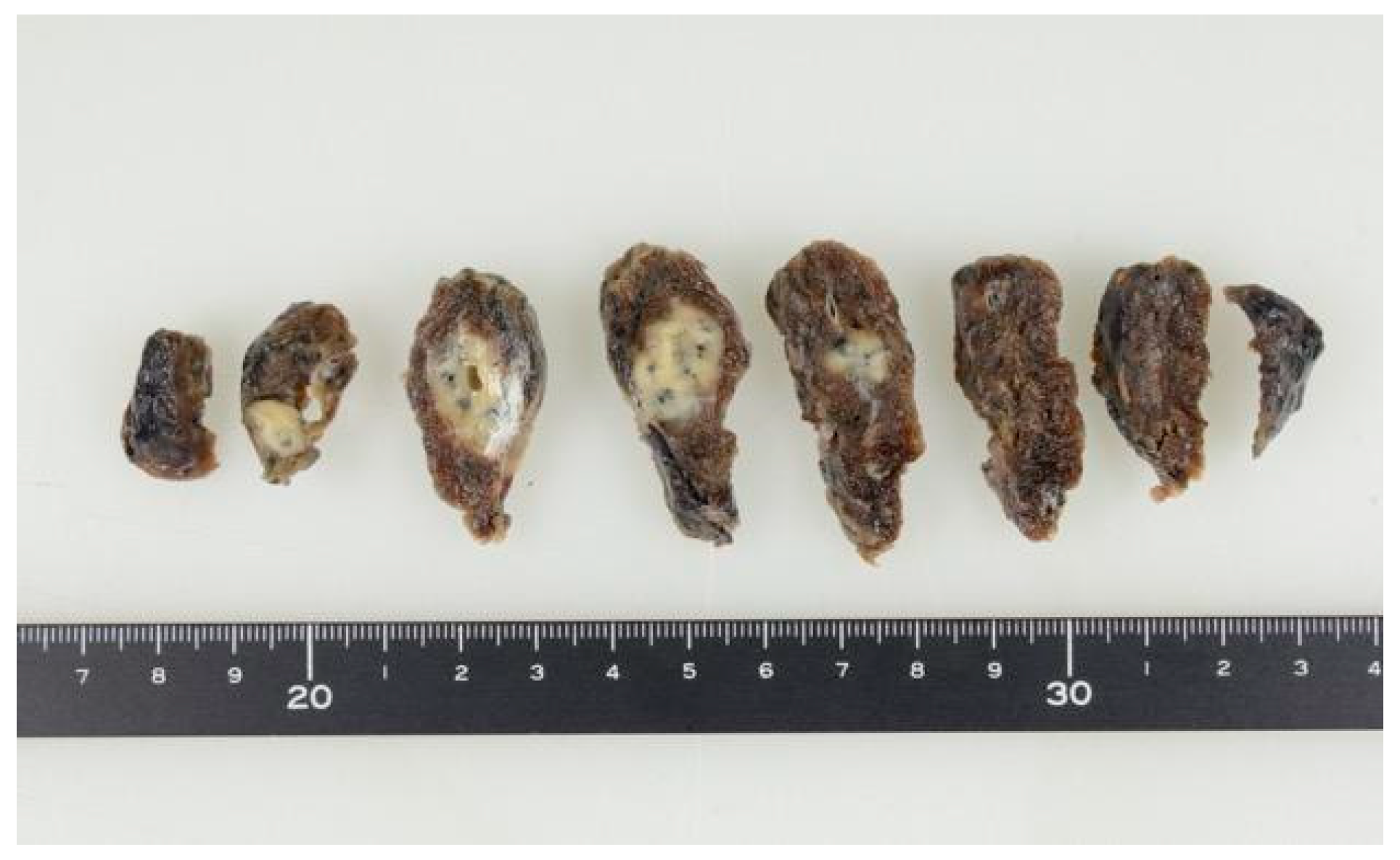
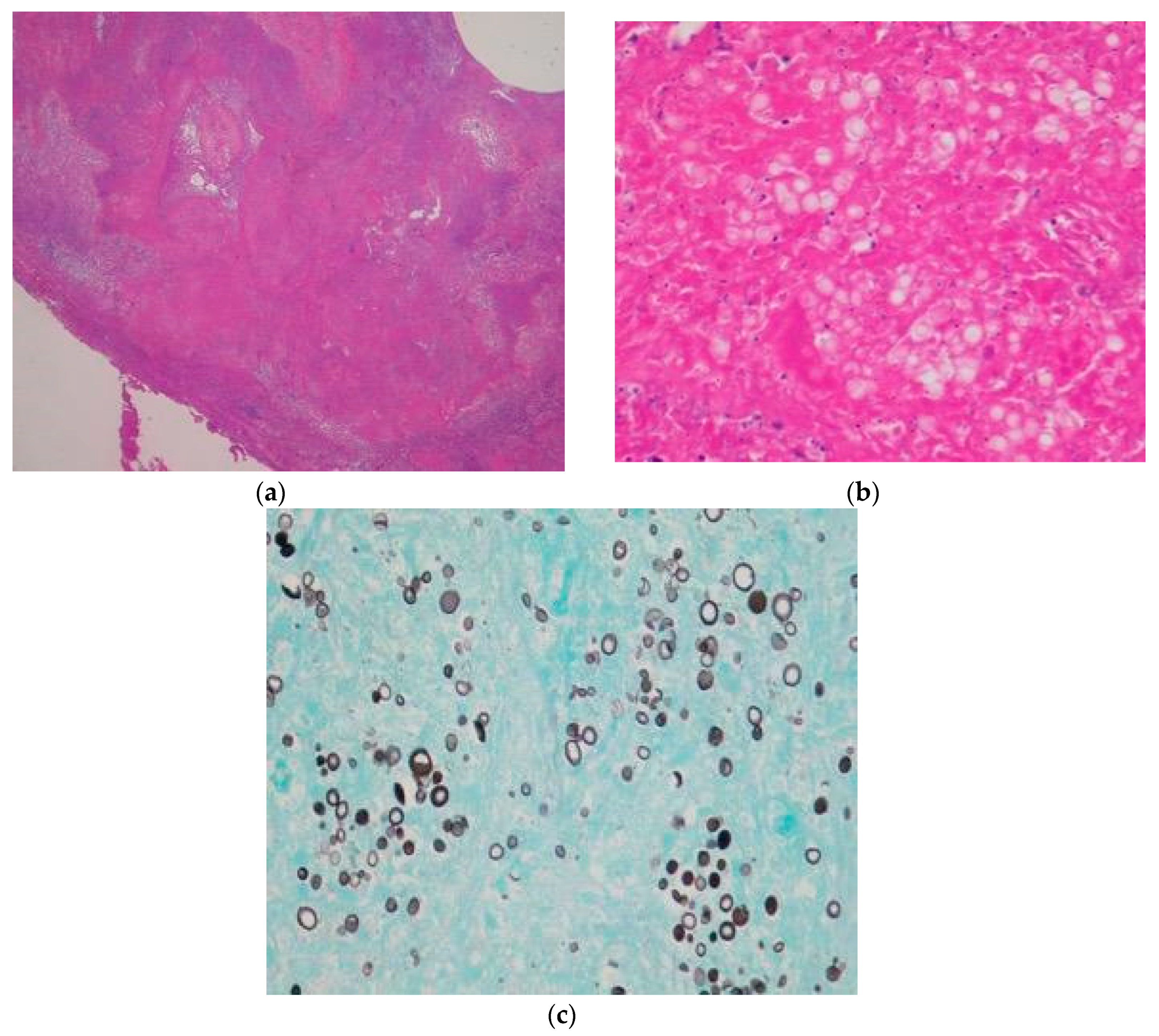
© 2019 by the authors. Licensee MDPI, Basel, Switzerland. This article is an open access article distributed under the terms and conditions of the Creative Commons Attribution (CC BY) license (http://creativecommons.org/licenses/by/4.0/).
Share and Cite
Yamagata, K.; Hirano, C.; Kanno, N.; Uchida, F.; Fukuzawa, S.; Yanagawa, T.; Bukawa, H. Pulmonary Nodule in a Patient with Oral and Lung Cancer: Cryptococcus Infection. Dent. J. 2019, 7, 102. https://doi.org/10.3390/dj7040102
Yamagata K, Hirano C, Kanno N, Uchida F, Fukuzawa S, Yanagawa T, Bukawa H. Pulmonary Nodule in a Patient with Oral and Lung Cancer: Cryptococcus Infection. Dentistry Journal. 2019; 7(4):102. https://doi.org/10.3390/dj7040102
Chicago/Turabian StyleYamagata, Kenji, Chikako Hirano, Naomi Kanno, Fumihiko Uchida, Satoshi Fukuzawa, Toru Yanagawa, and Hiroki Bukawa. 2019. "Pulmonary Nodule in a Patient with Oral and Lung Cancer: Cryptococcus Infection" Dentistry Journal 7, no. 4: 102. https://doi.org/10.3390/dj7040102
APA StyleYamagata, K., Hirano, C., Kanno, N., Uchida, F., Fukuzawa, S., Yanagawa, T., & Bukawa, H. (2019). Pulmonary Nodule in a Patient with Oral and Lung Cancer: Cryptococcus Infection. Dentistry Journal, 7(4), 102. https://doi.org/10.3390/dj7040102






